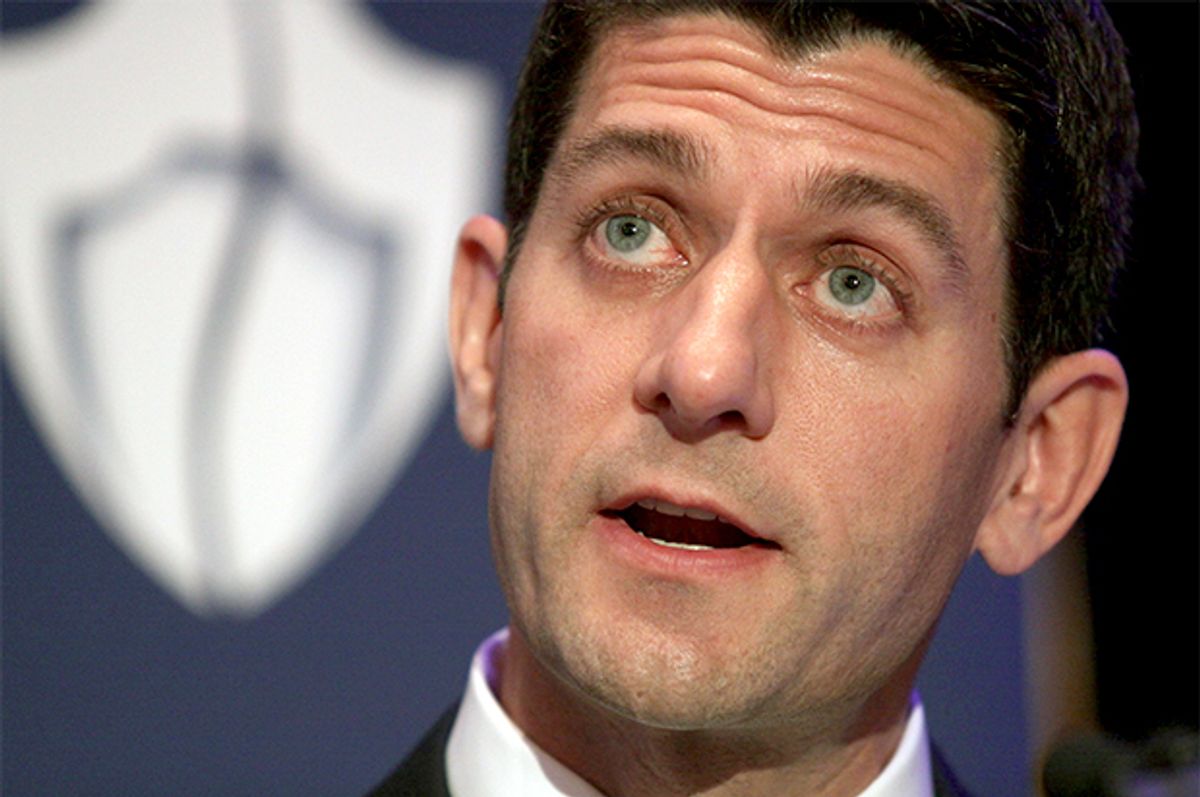There are two basic truths about Republican devotees of supply-side economics: they love cutting taxes for rich people, and they’re also enthusiastic deficit scolds. There’s a seemingly irreconcilable tension in that worldview that arises from a straightforward assumption: cutting tax rates for the people who pay the largest share of taxes will result in the government taking in less revenue.
The way they get around this dilemma is through the magic of dynamic scoring. Basically, when they calculate the cost of a tax cut, they assume that cutting taxes will produce an explosion of economic growth that will actually result in higher tax revenues. Cutting taxes, therefore, won’t increase the deficit – it could actually lower it! This is, to put it mildly, a contentious idea. Dynamic scoring on its own isn’t a particularly controversial practice, but strong proponents of supply-side economics vigorously abuse it in order to make some ruinous economic proposals seem palatable.
One of the biggest adherents of dynamic scoring is Rep. Paul Ryan, the incoming chair of the House Ways and Means Committee. The most recent of his celebrated ultra-conservative budget proposals made enthusiastic use of dynamic scoring in order to achieve balance in 10 years while simultaneously slashing tax rates and boosting defense spending. When you just assume that lowering tax rates will supercharge economic growth, anything becomes possible.
With a new, GOP-controlled Congress set to take power next month, Ryan wants the Congressional Budget Office (and other number-crunching government agencies) to start incorporating more and more dynamic scoring into its analyses of proposed tax legislation. Here’s his argument for why this makes sense, according to the Los Angeles Times:
"I prefer to call it reality-based scoring," Rep. Paul D. Ryan (R-Wis.), the incoming chairman of the tax-writing Ways and Means Committee, said in a recent speech to financial executives.
He and other Republicans said the current process fails to take into account the idea that tax cuts can increase economic growth — and therefore government revenue — by encouraging businesses and individuals to invest more.
"We can do so much more in measuring effects of tax changes," Ryan said.
The “reality” Ryan describes here is a central tenet of supply-side economics: tax cuts will spur sufficient economic growth to ultimately pay for themselves. The actual reality is very different – tax cuts almost always result in lower revenues. The Reagan tax cuts ballooned the deficit to such an extent that he actually had to bump up taxes several times to help keep it manageable. The Bush tax cuts of 2001 and 2003 are largely to thank for the deficits we have right now. Conversely, the tax increases of the Clinton years (derided at the time by Republicans and conservatives as economic suicide) coincided with vigorous economic growth and deficit reduction.
But one doesn’t even need to look to history to find repudiation of this “reality.” The supply-side “experiment” underway in Kansas right now, under the direction of Gov. Sam Brownback, is a testament to the dangers of relying on dynamic scoring to oversell tax cuts.
In 2012, Brownback made good on promises to slash income and small-business taxes in the state, claiming that they’d have immediate and potent effects on job creation and economic growth – “like shooting adrenaline into the heart of growing the economy,” he said at several points. His office produced analyses pointing to brisk job creation and an influx of new residents. What actually happened was very different: sluggish job growth, and ever-worsening budgetary problems. Just last month, state revenue forecasters acknowledged that their revenue projections from earlier this year were overly optimistic, and (since Brownback refuses to raise revenues) drastic cuts to spending will have to be made to make up the shortfall. While most states are crawling out the recession and devoting increased revenues to beefing up pared-down social services, Kansas is moving in the opposite direction, and all of it is attributable to Brownback’s tax cuts. (The governor has since given up the “adrenaline to the heart” metaphor and now insists that his policies just need time to kick in, which is just more proof of their boundless “dynamism,” I suppose.)
None of this, however, will shake the faith of supply-side adherents. Indeed, one could argue that situations like the one unfolding in Kansas are precisely the point of these policies: to starve budgets to the point that painful cuts to spending on social services are required to maintain some semblance of balance. Whatever the reality is on the ground, they’ll insist these slash-and-burn policies work, and they have the “math” to prove it.



Shares